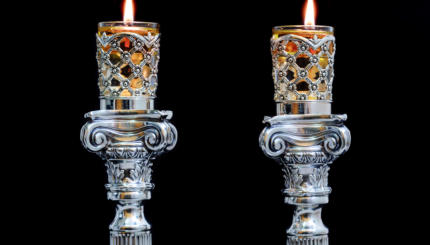Excerpted from Celebrate! The Complete Jewish Holiday Handbook. Reprinted with permission from Jason Aronson Inc.
As for most holidays, special designs were devised for the traditional braided bread. A ladder with seven rungs represents the seven spheres God traversed to descend to Mount Sinai. Long loaves of bread stand for the length and breadth of the Law (Job 11:9), and square loaves, with their four corners, represent the four layers of meaning inherent in Torah. 
Round loaves in tiers were called Siete Cielos (seven heavens) in Mizrahi countries; in others they represented the mountain and were known as Sinai Cake. [This is actually a modern rite of Spanish–not Mizrahi–origin and common in Sefardi–Meditteranean–communities. The tradition itself originated after 1942.] Large loaves or cakes with raisins and/or almonds were also called Sinai (or, in local terms, pashtudan or fladen).
The traditional two loaves, common for Shabbat and all festivals, have added meaning for the two loaves of the wave offering brought to the Temple. They are sometimes baked with their sides touching to resemble the tablets or the zodiac sign for the month of Sivan, Gemini (twins).
Among North African Jews, it is customary to eat matzah left from Passover in bowls of milk and honey, as a reminder that Shavuot is the finale of Pesach.
Shabbat
Pronounced: shuh-BAHT or shah-BAHT, Origin: Hebrew, the Sabbath, from sundown Friday to sundown Saturday.
Shavuot
Pronounced: shah-voo-OTE (oo as in boot), also shah-VOO-us, Origin: Hebrew, the holiday celebrating the giving of the Torah at Mount Sinai, falls in the Hebrew month Sivan, which usually coincides with May or June.


